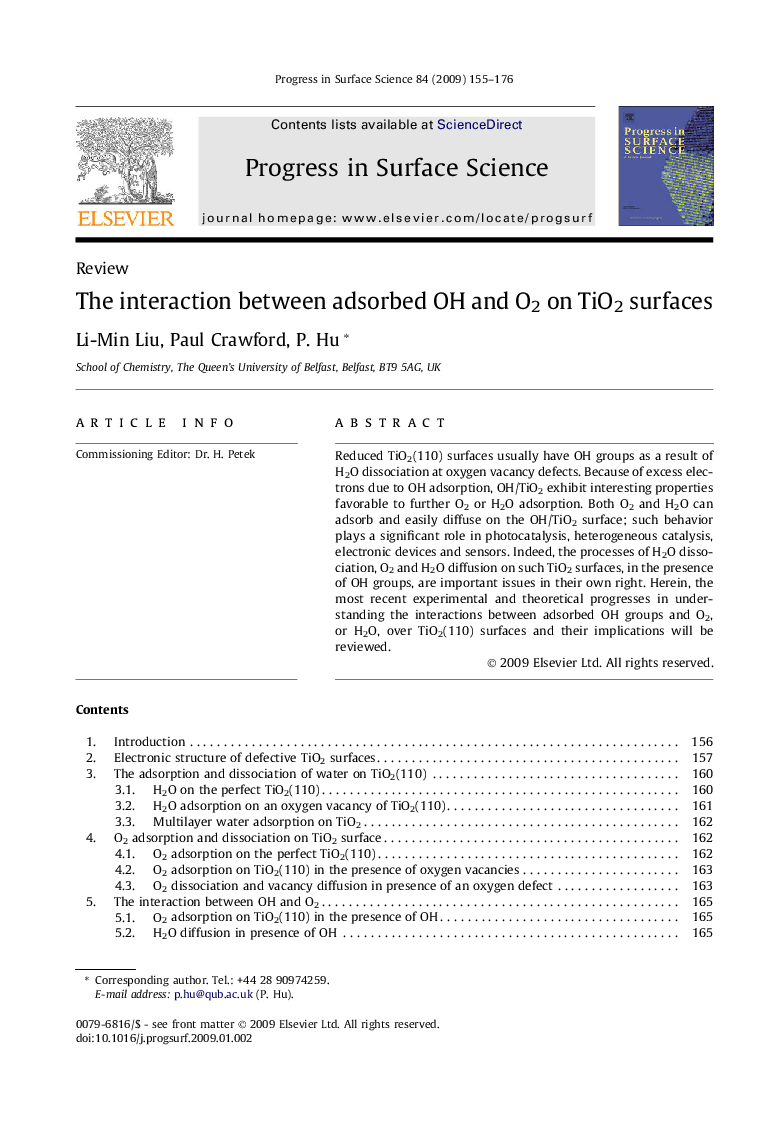| Article ID | Journal | Published Year | Pages | File Type |
|---|---|---|---|---|
| 5420041 | Progress in Surface Science | 2009 | 22 Pages |
Abstract
Reduced TiO2(110) surfaces usually have OH groups as a result of H2O dissociation at oxygen vacancy defects. Because of excess electrons due to OH adsorption, OH/TiO2 exhibit interesting properties favorable to further O2 or H2O adsorption. Both O2 and H2O can adsorb and easily diffuse on the OH/TiO2 surface; such behavior plays a significant role in photocatalysis, heterogeneous catalysis, electronic devices and sensors. Indeed, the processes of H2O dissociation, O2 and H2O diffusion on such TiO2 surfaces, in the presence of OH groups, are important issues in their own right. Herein, the most recent experimental and theoretical progresses in understanding the interactions between adsorbed OH groups and O2, or H2O, over TiO2(110) surfaces and their implications will be reviewed.
Related Topics
Physical Sciences and Engineering
Chemistry
Physical and Theoretical Chemistry
Authors
Li-Min Liu, Paul Crawford, P. Hu,
